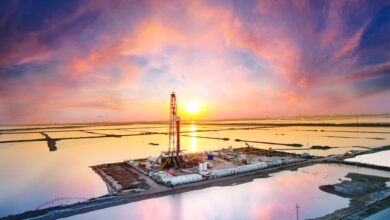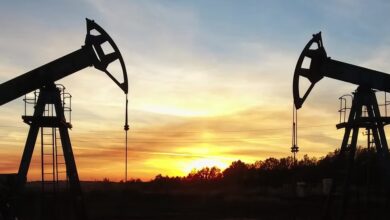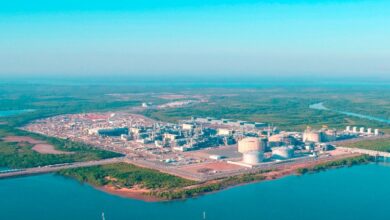Apache deploys data aggregation technology to enable data-driven decisions, reduce drilling costs

Big data holds significant promise for the oil and gas industry in terms of enabling better decision making, thus lowering costs. However, operators and contractors must take steps to make data more actionable and to overcome challenges relating to data quality and transformation, Michael Behounek, Senior Drilling Adviser at Apache Corp, said during a panel session at the 2017 IADC Drilling Onshore Conference in Houston on 18 May. Apache recently installed data aggregation boxes at 21 onshore rig sites in North America. The boxes are integrated with the daily drilling reporting system and run physics-based models at the rig site. “The purpose was not to have another data aggregation system on site,” he said. “The goal was that we wanted to put that data into use, and we really wanted data-driven decisions.”
When raw data is collected by the electronic drilling recorder (EDR), it has to be transformed. These transformations might involve averaging the data, which doesn’t always create an accurate picture of what the rig equipment is doing. To illustrate the challenges associated with data transformation and sensor readings, Mr Behounek pointed to a study in which top drive torque was tested during several rig moves. The top drive’s torque reading and the readings captured with a torque tension sub differed by as little as 3% or as much as 17% over the course of the study.
Apache also identified a need to use data to perform physics-based models. “There’s a lot of talk about big data and data analytics, but if you don’t ground it in physics, you’re going to be wasting a lot of time,” Mr Behounek said. The operator also wanted a data analytics system that could be easily integrated with rig control systems and equipment. “If we can’t get data to move smoothly across all of these areas, from the rig control system to the EDR to third-party supplies that come on site with an LWD system or cement units, it fails right away,” he said. Additionally, Apache sought a system that could merge streaming data with other data that’s been collected, including historical data.
To address the needs that were identified, Apache selected an off-the-shelf Bayesian network model that is similar to systems used to detect credit card fraud for its data aggregation boxes. It integrates historical data with the data being collected through the daily reporting tool. It’s able to identify sensor faults, faulty equipment and processes and run real-time hydraulics, torque and drag models. “Because we’re hooked up to the data recording tool, we can run these physics-based models on streaming data,” Mr Behounek said. “That gives us a huge advantage because what we’re doing is literally putting the advisory service right there on the rig. “It can process data rates up to 100Hz and can integrate with any type of communication protocol and transfer data through VPN, LTE or satellite systems.
The visual display is similar to a typical EDR display. The operator didn’t want to change the visual interface too radically from what drillers are used to, Mr Behounek said. “We wanted to meet the driller where he’s at today,” he added, noting that attention must be paid so that the visual display doesn’t end up being in the background as a reference. Screen overload in the driller’s cabin is a growing problem, with some cabins having as many as seven screens for the driller.
So far, Apache has installed this system on 21 land rigs it operates in North America. The company anticipates the ability to make data-driven decisions with the help of the system will reduce overall drilling costs by 9% to 12%. “Is it because of this system we put in?” Mr Behounek asked. “No, it’s just an enabler to that. We still need good people to make good decisions.”




